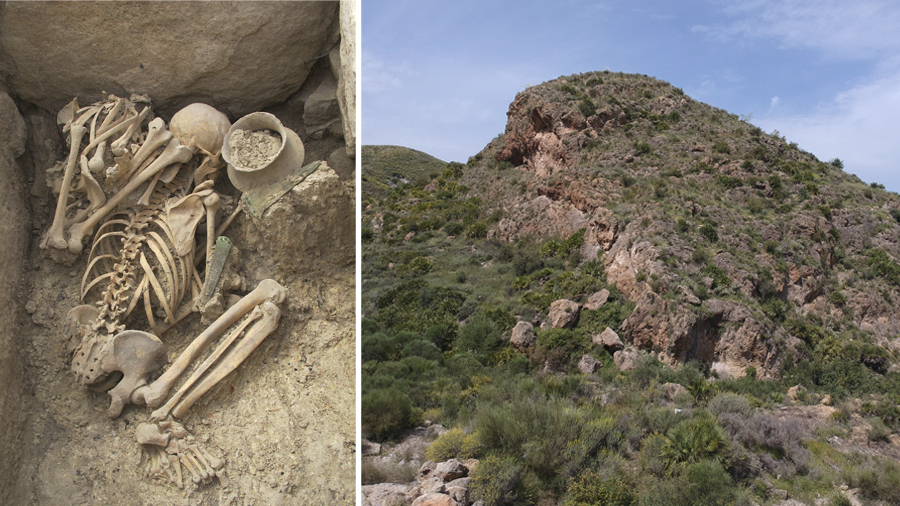BARCELONA, SPAIN—A new study of populations in southeastern Spain some 4,200 years ago suggests that groups with ancestry from the Eastern European Steppe mixed with dwindling groups of locals, according to a statement released by the Autonomous University of Barcelona (UAB). Previous studies have suggested that groups of warriors with Steppe ancestry invaded the Iberian Peninsula and violently replaced the male population. This period, which marked the transition from the Copper Age to the Bronze Age, is known for the shift from communal burials to single and double tombs by the Bronze Age El Argar culture. New radiocarbon dating of bones from these burials indicates that the shift happened quickly. The researchers, led by Rafael Micó of UAB and the Mediterranean Social Archaeoecology Research Group, also determined that there was a peak in the number of buried dead between 2550 and 2400 B.C., and then a drop in the number of dead between 2300 and 2250 B.C. “It is likely that the inhabitants of southeastern Iberia were already very few, around 4,300 or 4,200 years ago, just before the arrival of populations with new genetic components, labeled ‘Steppe,’” Micó explained. “When individuals with Steppe ancestry were found in southeastern Iberia, around 2200 to 2000 B.C., they simply mixed with small local groups or occupied uninhabited areas,” he said. Read the original scholarly article about this research in Journal of Archaeological Science: Reports. To read about an El Argar woman's rich burial, go to "Crowning Glory."
